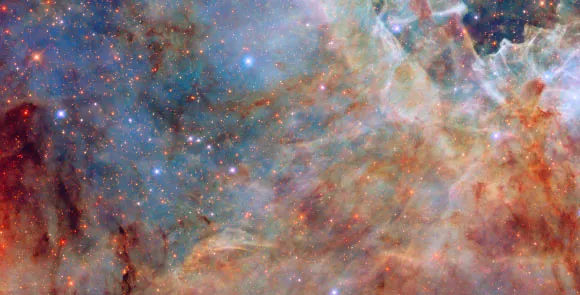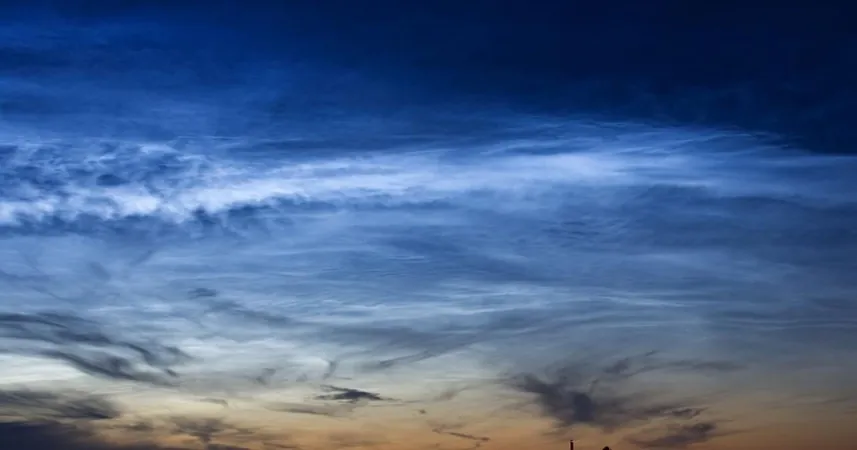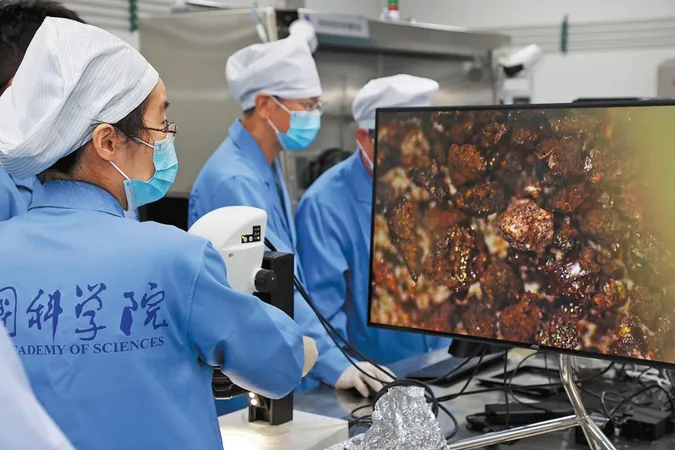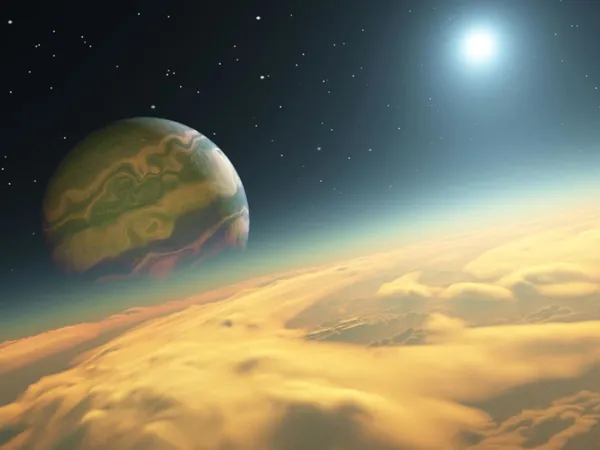
Hubble Telescope Captures Stunning View of Tarantula Nebula's Edge
2025-01-20
Author: Olivia
Hubble Telescope Captures Stunning View of Tarantula Nebula's Edge
In an awe-inspiring new image released by NASA, the Hubble Space Telescope reveals the captivating outskirts of the Tarantula Nebula, located within the Large Magellanic Cloud—a satellite galaxy of the Milky Way. Situated approximately 160,000 light-years away in the constellations Dorado and Mensa, this dwarf galaxy, though only 10-20% the mass of our own Milky Way, is home to spectacular regions of star formation.
Known scientifically as NGC 2070 or 30 Doradus, the Tarantula Nebula is heralded as the largest and most active star-forming region in the nearby Universe. Its brilliance was first documented by French astronomer Nicolas-Louis de Lacaille back in 1751, setting the stage for its discovery as a cosmic gem.
At the core of the Tarantula Nebula lies an astonishing concentration of some of the most massive stars identified, with a few shining at over 150 times the mass of our Sun! Star formation within this remarkable nebula began tens of millions of years ago, and unlike typical star formation processes contained in specific regions, here the process is dynamic and chaotic, akin to the grand finale of a fireworks display, where bursts of luminescence light up the surrounding space.
Strikingly, the Hubble image showcases serene blue gas, patches of brownish-orange dust, and a sprinkle of multicolored stars. The stars obscured by dust clouds exhibit a redder hue due to the scattering properties of cosmic dust; it tends to absorb and scatter blue light more than red light, allowing red wavelengths to shine through. This striking visual effect provides a window into the heavens, demonstrating the intricate dance of light and matter.
In this latest Hubble capture, both ultraviolet and infrared light were utilized alongside visible light, enabling astronomers to unveil a more comprehensive view of the nebula’s complex environment. The information gained from this image is invaluable; Hubble scientists aim to study the distant grains of cosmic dust. Understanding the role of this celestial dust is crucial in unraveling the mystery of star and planet formation, potentially shedding light on the origins of worlds beyond our own.
As observers gaze into the depths of the cosmos, the Tarantula Nebula serves as a reminder of the enchanting beauty and profound processes occurring in the Universe, inviting us to continuously explore and question our place within it. Prepare to be amazed by the cosmic wonders that Hubble continues to reveal!









 Brasil (PT)
Brasil (PT)
 Canada (EN)
Canada (EN)
 Chile (ES)
Chile (ES)
 Česko (CS)
Česko (CS)
 대한민국 (KO)
대한민국 (KO)
 España (ES)
España (ES)
 France (FR)
France (FR)
 Hong Kong (EN)
Hong Kong (EN)
 Italia (IT)
Italia (IT)
 日本 (JA)
日本 (JA)
 Magyarország (HU)
Magyarország (HU)
 Norge (NO)
Norge (NO)
 Polska (PL)
Polska (PL)
 Schweiz (DE)
Schweiz (DE)
 Singapore (EN)
Singapore (EN)
 Sverige (SV)
Sverige (SV)
 Suomi (FI)
Suomi (FI)
 Türkiye (TR)
Türkiye (TR)
 الإمارات العربية المتحدة (AR)
الإمارات العربية المتحدة (AR)